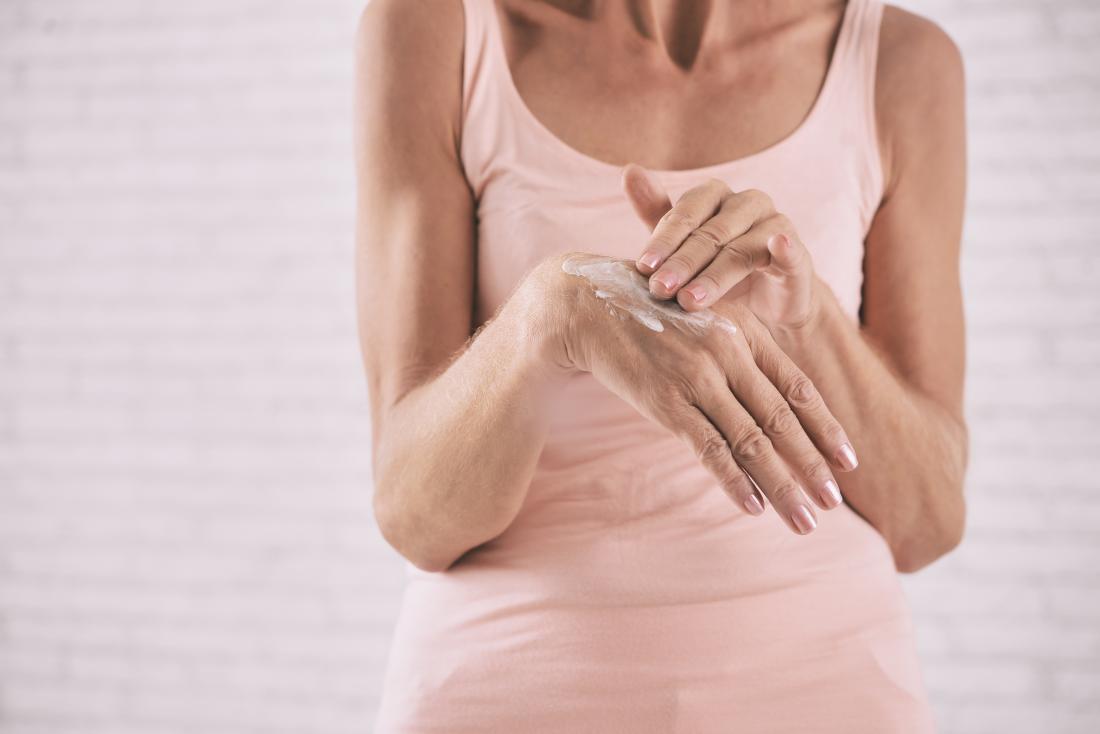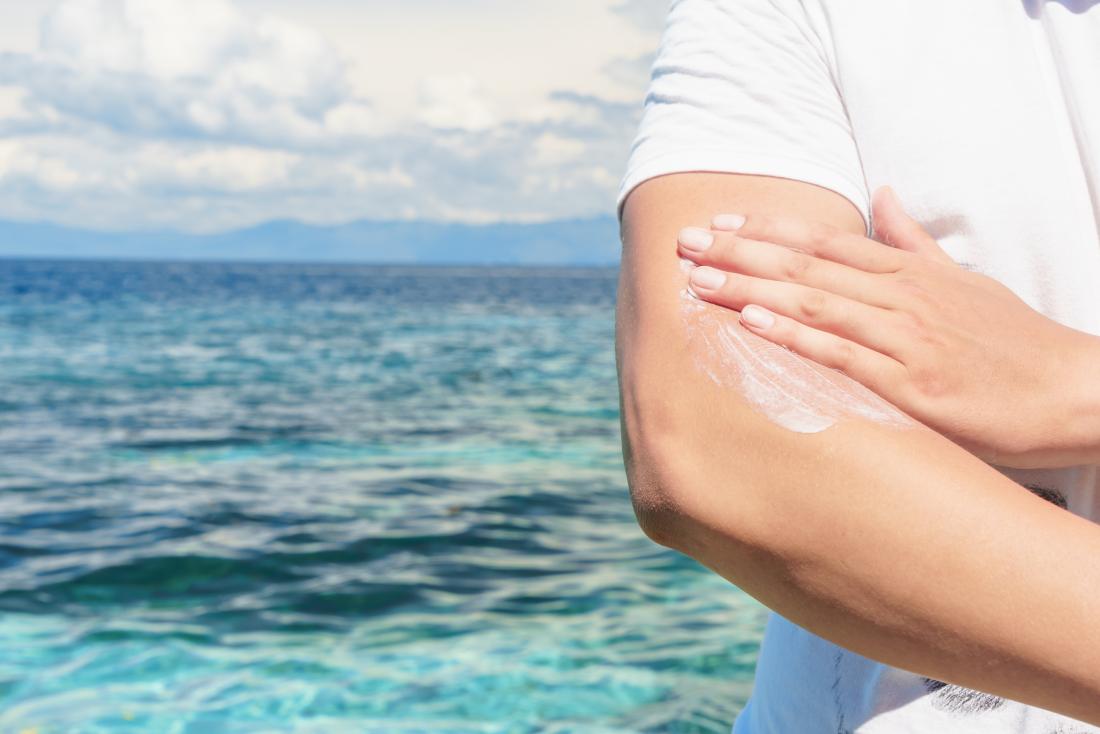Crepey skin typically affects large areas of skin and can make it noticeably more fragile and thin.
- Some over-the-counter products can help with different types of crepey skin.
- People can make lifestyle changes to try and prevent crepey skin.
- Hydration of the skin should also be a priority in preventing crepey skin.
What are the causes?

Crepey skin is characterized by skin that appears thin and wrinkled. It may be caused by aging or sun damage.
Both skin type and genetics can determine whether a person gets crepey skin and it is more common in older people, not usually appearing until people are at least in their 40s.
However, the most common cause of crepey skin is from ultraviolet (UV) radiation. The American Association of Dermatology says that exposure to UV radiation is the most preventable cause of early skin damage.
The damage can result either from exposure to the sun or the use of tanning beds.
Over time, the UV radiation will break down the elastin fibers in the skin, which allow the skin to stretch and return to its normal position.
While those fibers can heal, long-term exposure to UV radiation may mean that they are unable to repair completely.
People with fair skin are particularly susceptible to crepey skin, wrinkles, skin damage, and even skin cancer caused by the exposure to UV radiation.
Other causes of crepey skin include:
- gaining and losing substantial amounts of weight
- lack of moisture in the skin
- some medications, such as prednisone
- smoking
- sleep deprivation
- pollution
- poor nutrition
Treatment
There are many different treatments for crepey skin depending on how severe it is, what has caused it, and where it occurs on the body. People who have crepey skin can speak to their dermatologist to find out what is the best course of treatment for them.
Over-the-counter products

Over-the-counter topical products may help to treat crepey skin.
Prescriptions
Tretinoin is a topical prescription cream that a person can apply directly to the problem area. It is also part of the vitamin A family and is often used on the face to protect the skin from UV exposure.
Other topical treatments may contain stabilized vitamin C.
Radiofrequency or ultrasound
Dermatologists may use a radiofrequency device, ultrasound, or a pulsed light device, often known as laser treatment, to help treat crepey skin from the inside out.
The device heats up small areas of skin, putting energy deep into the skin. This procedure helps the collagen to remodel and makes the skin tighter as a result.
Areas of the skin attached to muscles, such as the upper arm, do not respond as well to this type of treatment as other areas, such as the face and neck, do.
This treatment used to be painful and require anesthesia, but over time the technology has developed and now people can have the treatment without anesthesia.
Fillers
Fillers, such as Radiesse, have been shown to be an effective treatment for crepey skin*, particularly on the upper arm.
The filler is injected into the skin and has a volumizing effect on the skin and yet remains a relatively non-invasive treatment.
Surgery
Surgery is most often carried out on people who have lost a large amount of weight and have been left with an excess of crepey skin*.
A plastic surgeon may recommend an operation to remove the skin, but people should consider this carefully as it does carry some risks.
How can crepey skin be prevented?

Applying sunscreen to skin exposed to sun light may help to prevent crepey skin.
The most effective way to prevent crepey skin* from developing is to protect the skin from UV exposure by seeking shade, wearing protective clothing, and wearing a sunscreen with a sun protection factor (SPF) of 30 or higher when outside in the sun.
As people age, it is essential that they adapt their skincare routine accordingly. Once people are in their 40s, the skin no longer produces as much of the oil that protects it from chemicals that cause inflammation and irritation.
The exposure to UV radiation from tanning beds is shown to damage the DNA of skin cells, which can lead to premature skin aging and skin cancer. People are advised not to use them.
Hydration
People can keep their skin hydrated by using a good moisturizer to trap water under the skin to keep it looking young and healthy.
Using topical creams that contain retinol can help restore the skin’s elasticity and thicken collagen, which might reduce the chance of developing crepey skin*.
Nutrition
What people eat can affect their skin and to try to reduce the chances of developing crepey skin*, it is essential to include the following in a balanced diet:
- antioxidants, such as carotenoids, tocophenols, and flavonoids
- vitamins A, C, D, and E
- omega-3 fatty acids
Home remedies
There are also some home remedies that people have found useful in treating and preventing crepey skin*:
- massaging the face, arms, and legs
- doing physical exercise
- reducing stress
- using natural moisturizer made from mud and honey
- exfoliating with a homemade scrub made from sugar and olive oil
Any person who wants to try any of these home remedies should talk to their dermatologist first.